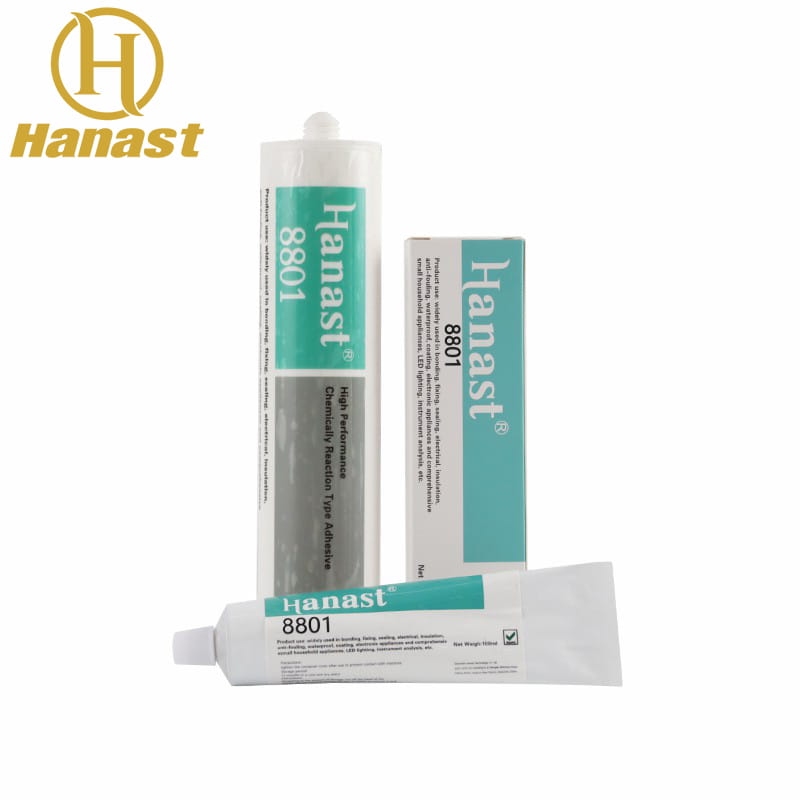One-component (RTV1) and two-component (RTV2) in RTV silicone rubber
 Jan 31,2023
Jan 31,2023

 Hanast
Hanast
The difference of packaging methods between single-component adhesive and two-component adhesive:
Single-component rubber is also called RTV1. As the name implies, every unit of RTV silicone rubber has only one component. The usual packaging methods are: 100ml aluminum tube (toothpaste), 300ml plastic tube and 2600ml barrel.
Two-component rubber is also called RTV2 or AB rubber, that is, each unit of RTV silicone rubber has two components, A and B. Common packaging methods include single components: 5kg barrel, 10kg barrel and 20kg barrel.
Differences in performance and application between one-component adhesive and two-component adhesive:
Single-component adhesives usually have stronger adhesion, tear resistance, tensile rate, mechanical strength and aging resistance. Therefore, in practical application, it is mainly used for bonding, filling, damping and sealing of parts, shells, components and various industrial and living materials in equipment.
Two-component adhesives usually have better flowability, but the bonding ability and mechanical strength are slightly weaker than single-component adhesives. Therefore, in practical application, it is mainly used for waterproof sealing, potting and gap sealing of equipment.
Differences in performance and application between one-component adhesive and two-component adhesive:
Single-component glue: there is only one component, which can be directly extruded without mixing. However, the one-component adhesive can only be cured by cross-linking between molecules due to moisture in the air, and it cannot be accelerated by heating. Therefore, the curing time is slightly longer. If it is a single-component potting adhesive, there are certain requirements for the application thickness, which usually need to be controlled within 6 mm. If the potting thickness exceeds 6 mm, the curing rate will be very slow. Layered potting can be considered to improve the curing rate.
Two-component adhesive: There are two components, A and B, which need to be mixed according to the specified proportion when using. At present, the common proportion of A and B in the market is 1:1 and 10:1. No matter what mixing ratio, it has no effect on the performance of the two-component adhesive, but from the perspective of uniform mixing, 1:1 will be more conducive to mixing. The curing of two-component adhesive does not depend on the moisture in the air. When the pouring thickness is more than 6mm, the curing speed of two-component adhesive is faster than that of one-component adhesive, and it can be accelerated by heating operation.




 Home
Home
 Use method of one-component RTV silicone adhesive
Use method of one-component RTV silicone adhesive  You May Also Like
You May Also Like







 Tel
Tel
 Email
Email
 Address
Address












